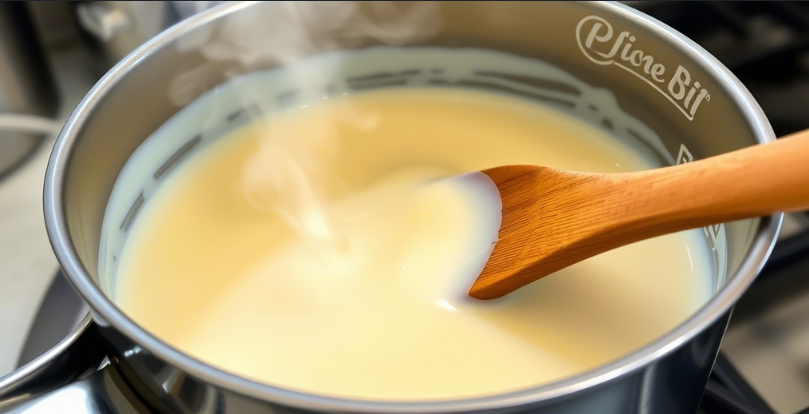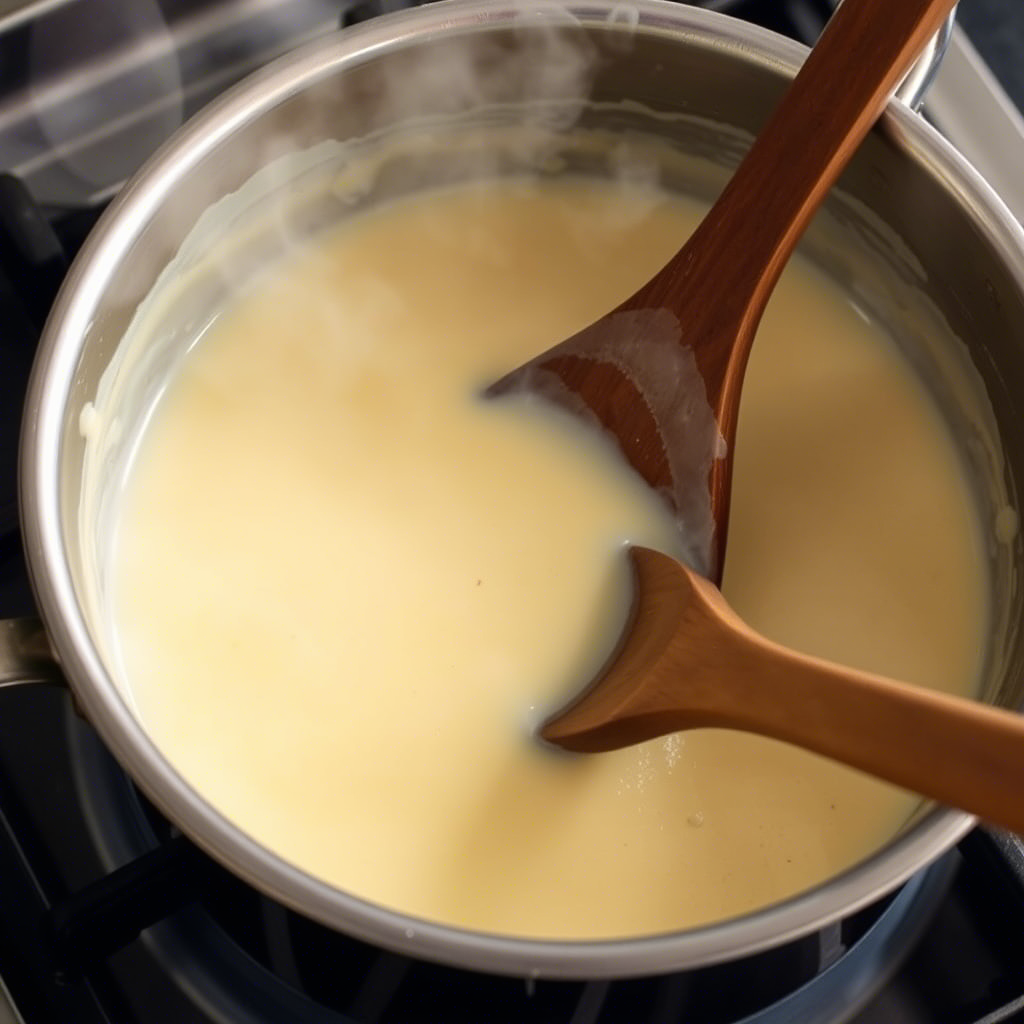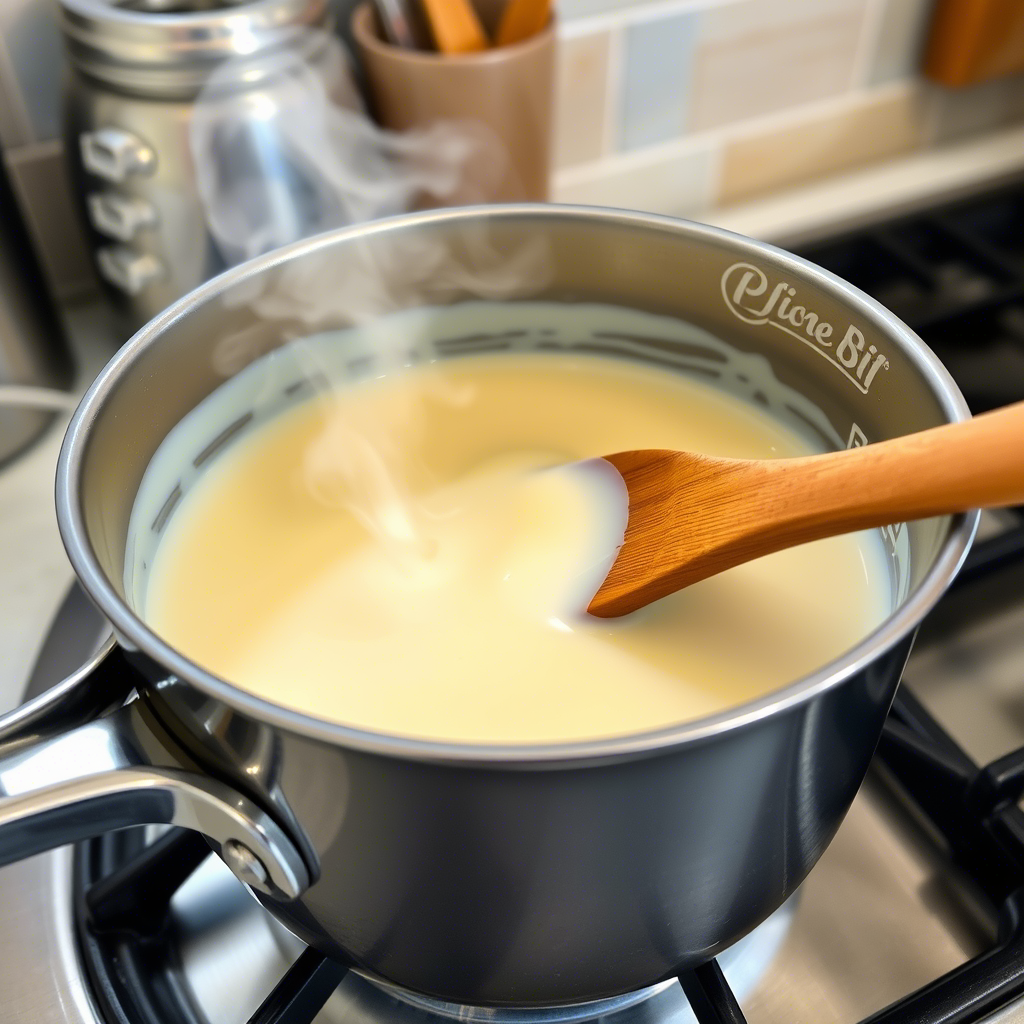
The Best Cooking Cream: Best Recipes 2025

Cooking cream has been a quiet hero in my kitchen for years. It’s one of those ingredients that seems simple, but believe me — once you understand how to use it right, it can completely transform your cooking.
I’ve worked in restaurants where cream-based sauces were absolute crowd favorites. I’ve also seen home cooks struggle with cream splitting, turning watery, or simply not knowing which type to grab at the store.
Whether you’re making a silky pasta sauce, a delicate cream soup, or just want to level up your baking — cream deserves respect. And once you learn its rules, it becomes one of your most loyal ingredients.
Let me show you everything I’ve learned about it.
- What exactly is a Cooking Cream?
- Main Types of Cream Used in Cooking
- Using Сream
- Storage & Shelf Life
- Cooking Cream Properties Table
- Best Recipes
- Creamy Pasta Sauce (My Go-To Weeknight Winner)
- Creamy Mushroom Soup (Simple & Elegant)
- Creamy Strawberry Dessert (5-minute Magic)
- Tips from Chef Markus
- FAQ about Cooking Cream — Chef Markus Answers
What exactly is a Cooking Cream?
Let me tell you something from my own kitchen experience — cooking cream is one of those things that can quietly transform your food from “good” to “oh wow.” It’s basically cream with a fat content balanced in a way that makes it stable when heated. It doesn’t split or curdle easily like regular dairy might. This makes it absolutely perfect for hot sauces, soups, and creamy dishes.
But here’s a thing — not all creams are the same. Depending on the fat content, their behavior in cooking changes a lot. Some will give you silky smooth sauces, others are better left for desserts or whipping.
Main Types of Cream Used in Cooking
In my years working in professional kitchens, I’ve pretty much used every type of cream you can think of. The main players you’ll find are:
- Heavy Cream (also called Double Cream in some places)
- Light Cream
- Whipping Cream
- Plant-Based Creams (for those avoiding dairy)
Each of them has their own character, strengths, and best use cases. And if you know how to choose them right — cooking becomes a whole lot easier.
Using Сream
Sauces
If there’s one place where cream absolutely shines, it’s sauces. As a chef, I love how a splash of cream can round out flavors, balance acidity, and bring that silky mouthfeel everybody craves.
- Heavy cream is my go-to for rich pasta sauces like Alfredo or a peppercorn steak sauce. It thickens beautifully without extra flour.
- Light cream is good when I want a thinner, more delicate sauce for fish or vegetables.
- Plant-based creams — coconut cream is perfect for Thai curries, and cashew cream works great in vegan Alfredo-style sauces.
Soups
Cream in soup is pure comfort.
- For cream soups like mushroom, pumpkin, or seafood bisque, I usually go with heavy or whipping cream. They give body without overpowering other flavors.
- Light cream is nice in lighter vegetable soups when you want just a little silkiness.
- Plant-based cream — oat or soy cream works beautifully here too, especially if you want dairy-free options.
Desserts
Cream is essential in so many desserts — and each type plays its role.
- Whipping cream is classic for cakes, trifles, and mousses.
- Heavy cream makes the best ganache or caramel sauces.
- Light cream is less common here — usually for pouring over fruit or in simple baked goods.
- Plant-based creams — coconut cream is great whipped or chilled for tropical desserts.
Baking
Cream can show up in the dough or the topping.
Plant-based creams (like soy or oat) can sub in many baking recipes, but watch the sweetness levels.
Heavy cream adds richness to scones, biscuits, or shortcakes.
Light cream works for brushing on pastries for a golden crust.
Storage & Shelf Life
Storage Temperature
Cooking cream is pretty sensitive to temperature changes — I’ve learned this the hard way over the years. The best cooking creams are prone to spoilage, it is a delicate ingridient that requires proper storage. To keep cream fresh and safe:

| Cream Type | Storage Temp | Shelf Life (Unopened) | Shelf Life (Opened) |
|---|---|---|---|
| Heavy Cream | +2 °C to +5 °C | 1–2 months | 3–5 days after opening |
| Light Cream | +2 °C to +5 °C | 1 month | 3–4 days after opening |
| Whipping Cream | +2 °C to +5 °C | 1–2 months | 3–5 days after opening |
| Plant-Based Cream | +2 °C to +7 °C | Check label (usually 1–2 months) | 4–7 days after opening |
Tip from me: Always store cream in the coldest part of your fridge, not in the door — temperature fluctuates there too much.
Signs Cream is Spoiled
If you’re not sure whether your cream is still okay — trust your senses. I always check:
- Smell → Any sour, off, or bitter smell? Bin it.
- Texture → Lumpy or separated without shaking back together? Bad sign.
- Taste → If still unsure, taste a little. Sour or odd flavor = no-go.
- Color → If it’s yellowing or has spots — definitely spoiled.
And remember — plant-based creams can go bad too! They might not smell sour like dairy, but they can develop a weird, bitter taste or slimy texture.
Cooking Cream Properties Table
Here’s a simple table I made for myself back in the day when I was training young chefs in the kitchen — helps quickly understand what cream to use and when.

| Cream Type | Fat Content | Best Use | Storage Temp |
|---|---|---|---|
| Heavy Cream | 35–40% | Sauces, Ganache, Whipping, Enriching soups | +2 °C to +5 °C |
| Light Cream | 15–20% | Desserts, Light sauces, Coffee | +2 °C to +5 °C |
| Whipping Cream | 30–36% | Whipped toppings, Mousses, Pastry creams | +2 °C to +5 °C |
| Plant-Based Cream | Varies | Vegan dishes, Light sauces, Coffee | +2 °C to +7 °C |
Best Recipes
Creamy Pasta Sauce (My Go-To Weeknight Winner)
This is a real kitchen classic for me — quick, rich, and just comforting after a long day.
Ingredients:
- 250ml heavy cream
- 1 small onion, finely chopped
- 2 cloves garlic, minced
- 2 tbsp butter
- 50g grated Parmesan
- Salt, pepper
- Fresh parsley (optional)
Steps:
- In a pan, melt butter on medium heat.
- Add onion, cook until soft.
- Add garlic, stir for 30 seconds.
- Pour in the cream, bring to a gentle simmer.
- Season with salt and pepper.
- Let it reduce for 4-5 minutes until slightly thick.
- Stir in Parmesan.
- Toss with cooked pasta.
- Sprinkle parsley and serve hot.
Creamy Mushroom Soup (Simple & Elegant)
Perfect when it’s cold outside or when you want something soothing.
Ingredients:
- 400g mushrooms, sliced
- 1 small onion, chopped
- 2 cloves garlic, minced
- 500ml vegetable or chicken broth
- 250ml heavy cream
- 2 tbsp butter
- Salt, pepper
- Fresh thyme
Steps:
- In a large pot, melt butter over medium heat.
- Add onions, cook until soft.
- Add mushrooms, cook until browned.
- Add garlic and thyme, stir for a minute.
- Pour in broth, simmer for 10 minutes.
- Blend until smooth (or leave chunky, I like both).
- Stir in cream, season to taste.
- Simmer another 2-3 minutes.
- Serve with bread.
Creamy Strawberry Dessert (5-minute Magic)
When you want dessert but don’t want to work hard — this never fails me.
Ingredients:
- 250ml whipping cream
- 2 tbsp powdered sugar
- Fresh strawberries, sliced
- Crushed biscuits or cookies
Steps:
- Whip the cream with sugar until soft peaks.
- Layer crushed biscuits at the bottom of a glass.
- Add strawberries.
- Top with whipped cream.
- Repeat layers if you like.
- Chill for 10-15 minutes or eat right away.
Tips from Chef Markus
Mistakes to Avoid When Using Cooking Cream
Let me tell you — I’ve seen them all in my kitchen. Cooking cream looks easy to use, but people still fall into classic traps. Here’s what to watch out for:
1. Boiling the Cream Hard
→ Big mistake. Cream doesn’t like aggressive heat. Heavy bubbling will break it — fat separates, texture goes grainy. Always simmer gently, low and slow.
2. Adding Cold Cream to Hot Sauce
→ If you pour fridge-cold cream straight into a hot pan — expect it to split or curdle. Warm it a little or temper it (add a spoon of hot sauce to cream first, then mix in).
3. Using Wrong Cream for Whipping
→ Light cream or plant-based cream with low fat will never whip properly. For whipped toppings, always go for whipping cream or heavy cream with at least 30-35% fat.
4. Over-whipping Cream
→ Another classic! If you whip too long, cream turns into butter. Watch it carefully — soft peaks are often all you need.
Best Pairings & Dishes with Cooking Cream
Cream is magic — but it shines best with certain things. Here’s what I personally love pairing it with:
| Dish Type | Cream Pairing Tip |
|---|---|
| Pasta Dishes | Heavy cream with Parmesan or blue cheese |
| Soups | Light cream for smooth texture, no heaviness |
| Desserts | Whipping cream with vanilla or berries |
| Meat Sauces | Heavy cream + mustard or peppercorns |
| Vegan Dishes | Oat or soy cream with lemon or herbs |
FAQ about Cooking Cream — Chef Markus Answers
What’s the difference between cooking cream and whipping cream?
Good question I hear a lot. Cooking cream usually has stabilizers, so it doesn’t split easily when heated — perfect for sauces and soups. Whipping cream is all about fat content (usually 30-35%) and the ability to whip into fluffy peaks for desserts. Technically, you can cook with whipping cream, but it’s more sensitive to heat.
Can I freeze cooking cream?
Honestly? I’d not do that. Cream tends to separate after freezing and thawing. The texture gets weird — grainy or watery. If you must freeze it, use it later in blended soups or sauces where texture doesn’t matter much.
Why did my cream turn watery in the fridge?
Ah, classic case of low-fat cream or plant-based cream separating a bit over time. Just shake it well before using. But if it smells sour or looks curdled — toss it.
How long does opened cooking cream last?
Opened cream stays good in the fridge for about 3-5 days, maybe up to a week if it’s very fresh and sealed tight. Always smell and taste a little before using — fresh cream smells sweet, spoiled one smells sour or like yogurt.
How can I thicken a cream sauce if it’s too runny?
My personal kitchen fix? Let it simmer slowly to reduce — time is your friend. If in a rush, a tiny slurry of cornstarch or flour mixed with cold water works too. But simmering keeps flavor pure.
Can I substitute plant-based cream with dairy cream?
Absolutely. I often do in vegan or lighter recipes. Just remember: plant-based creams don’t behave exactly like dairy — some won’t whip, some won’t thicken the same. Oat cream is great in sauces, coconut cream works in desserts, soy cream is versatile.
Can I use sour cream instead of cooking cream?
Sometimes yes, but be careful. Sour cream has lower fat and higher acidity, so it can split easily if boiled. I use it for cold sauces, dips, or added at the very end of cooking — never for simmering or reducing like regular cream.
How do I store opened cream properly?
Simple trick from my kitchen: Always wipe the lid clean before closing. Store it near the back of the fridge where temperature is stable (not in the door). Keep it sealed airtight — cream easily absorbs fridge smells.
Can expired cream be used for anything?
Look, I’m all for zero waste — but cream that smells sour or tastes off belongs in the bin. Don’t risk food poisoning. However, if it’s just slightly past date but smells/tastes fine, I sometimes use it in baking or cooked dishes.